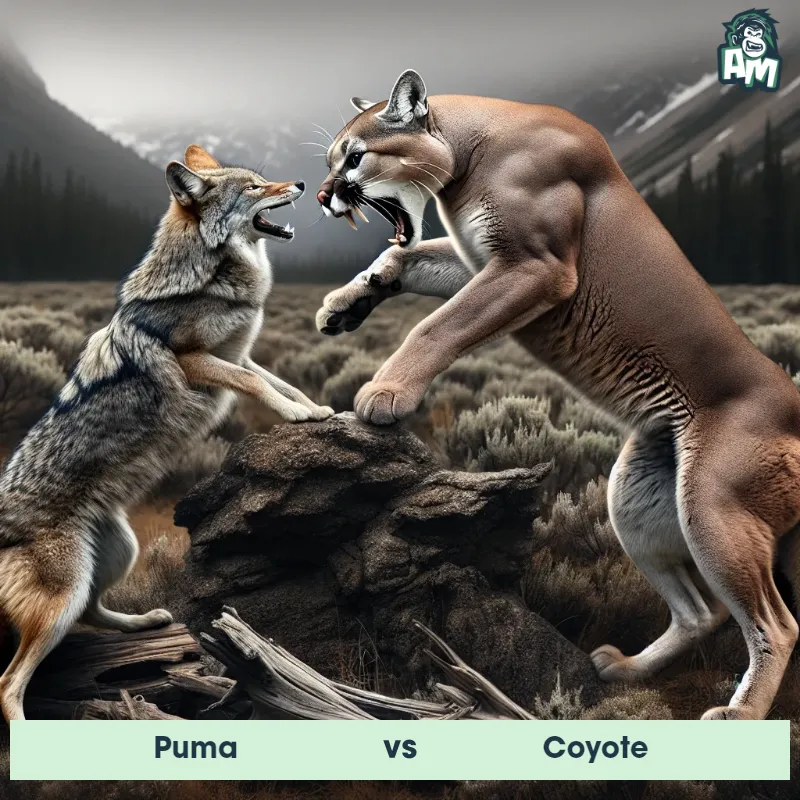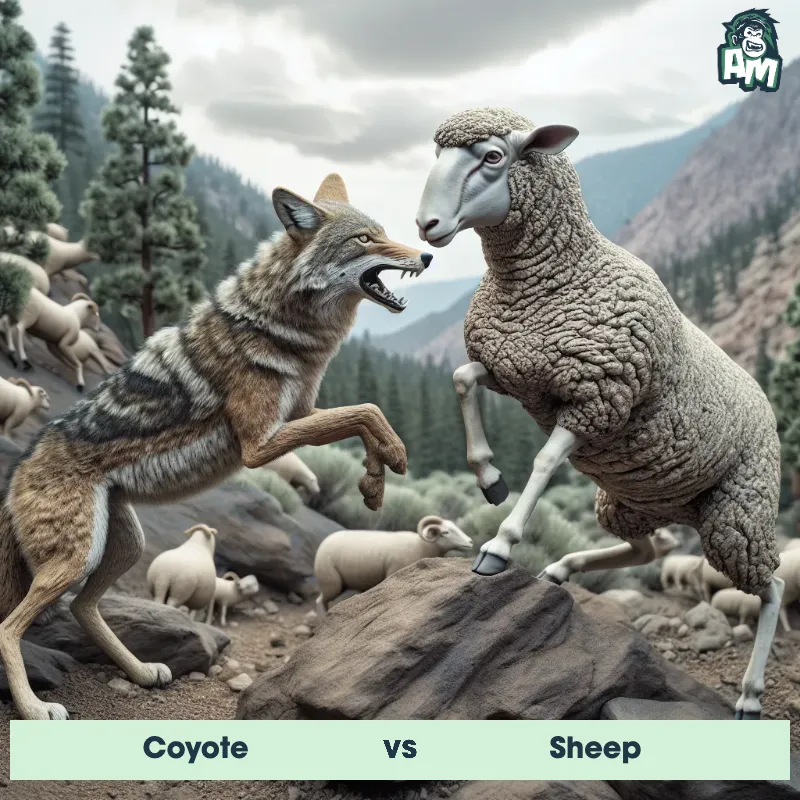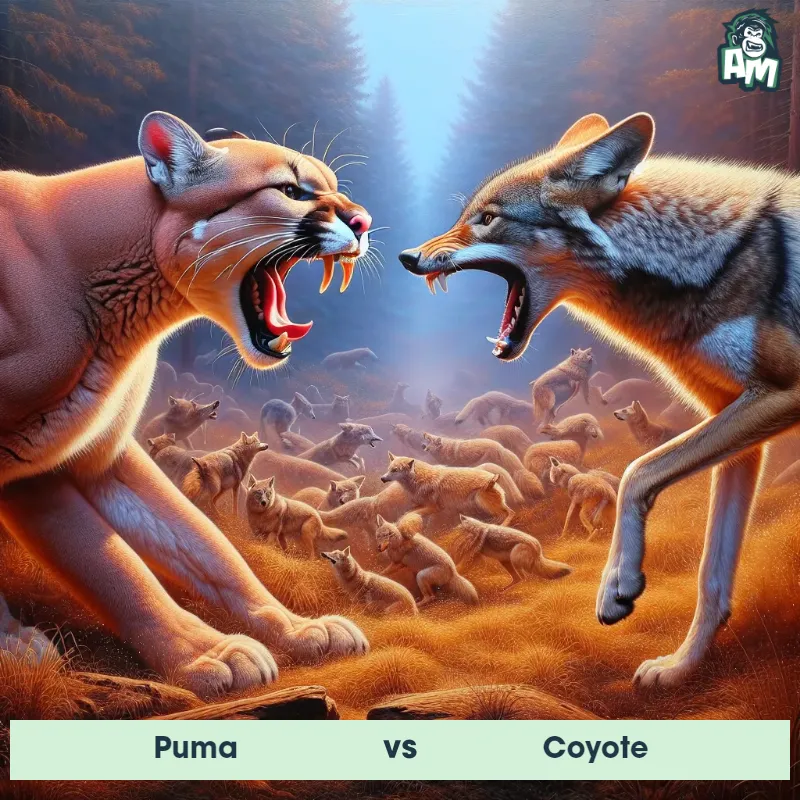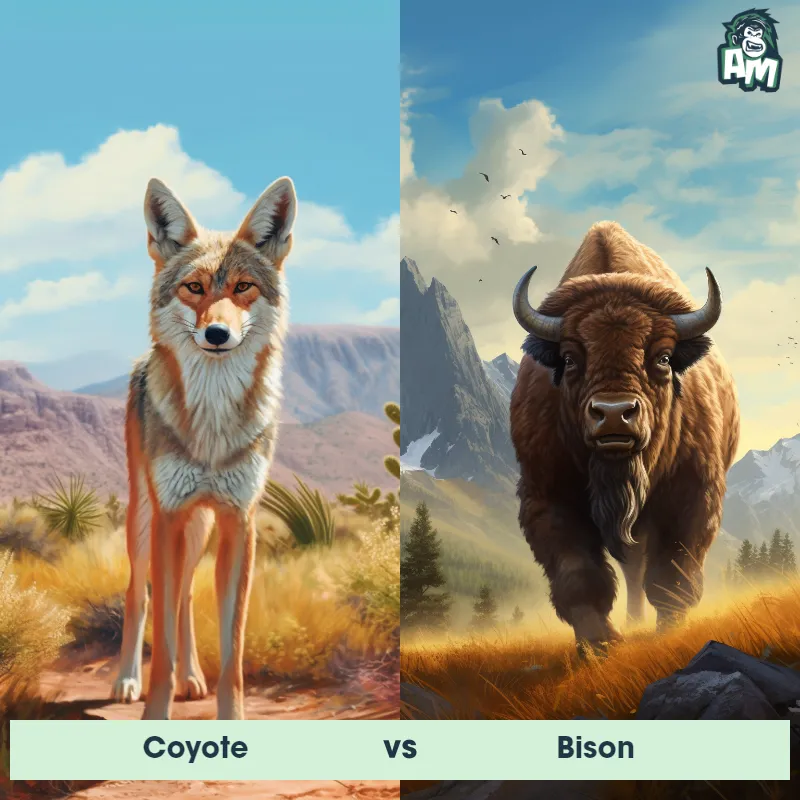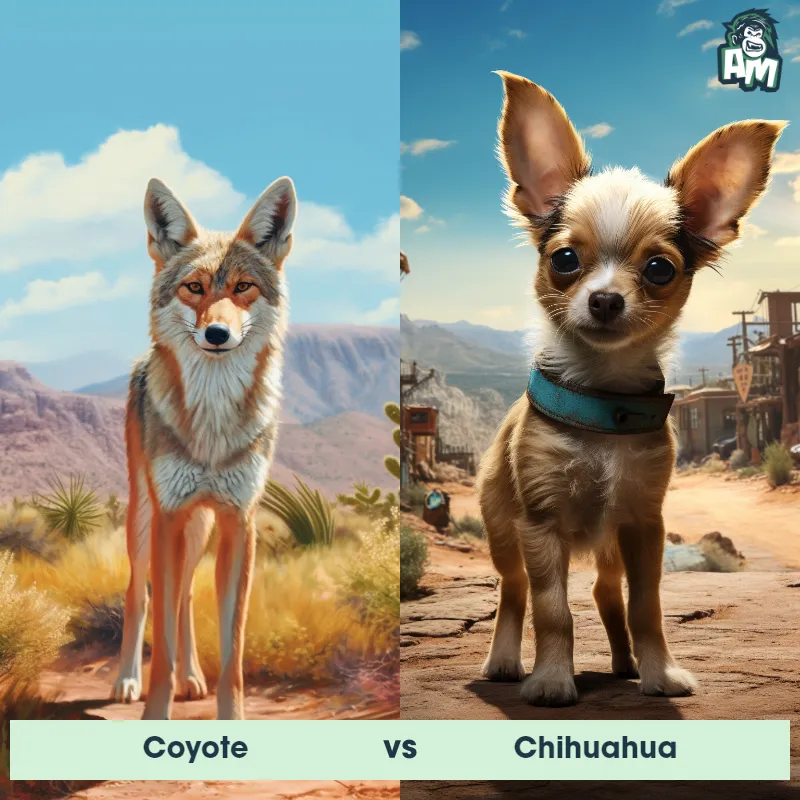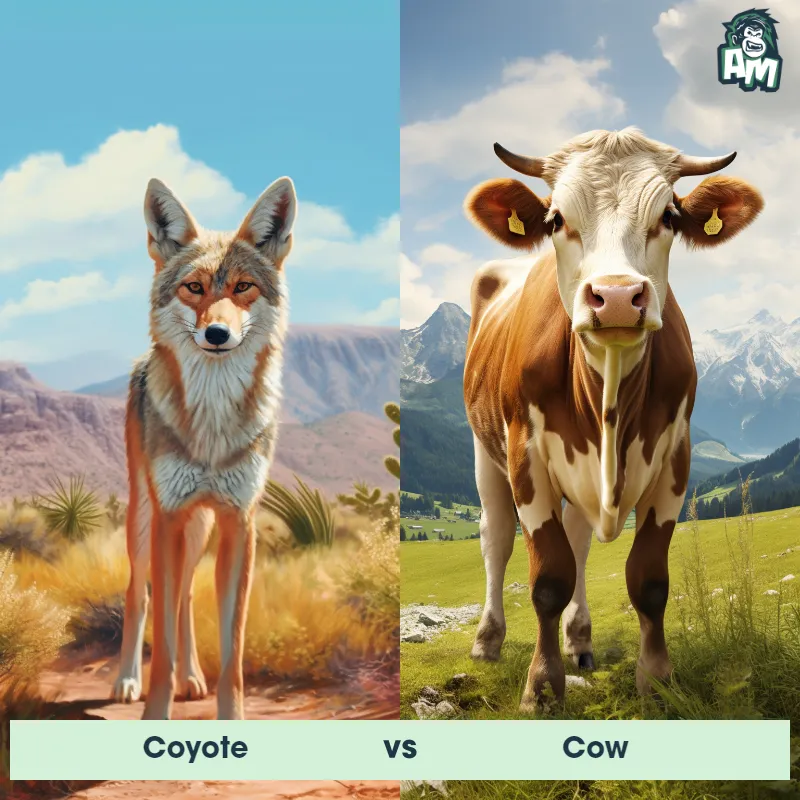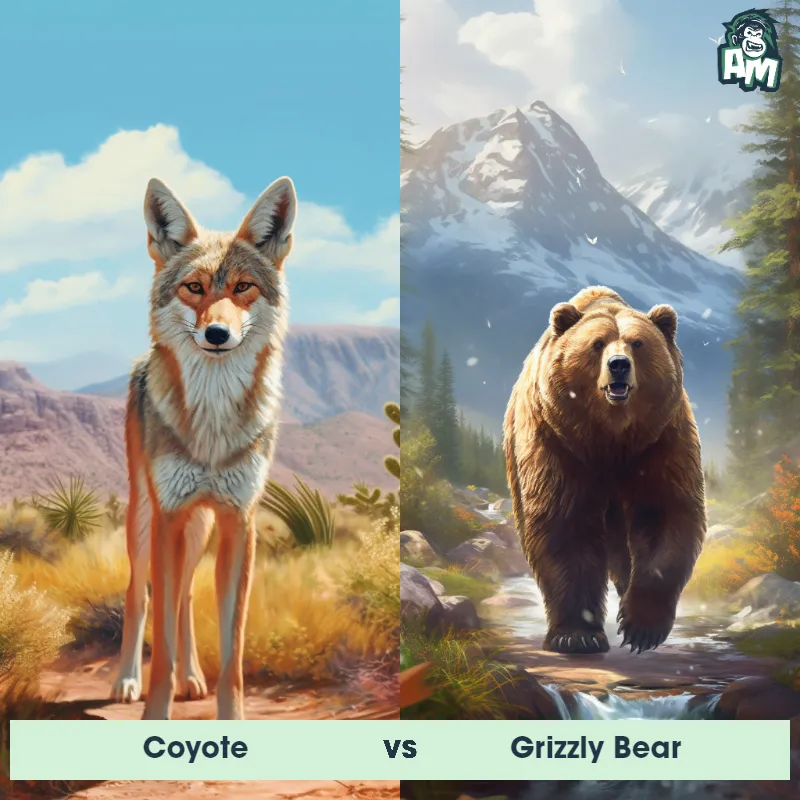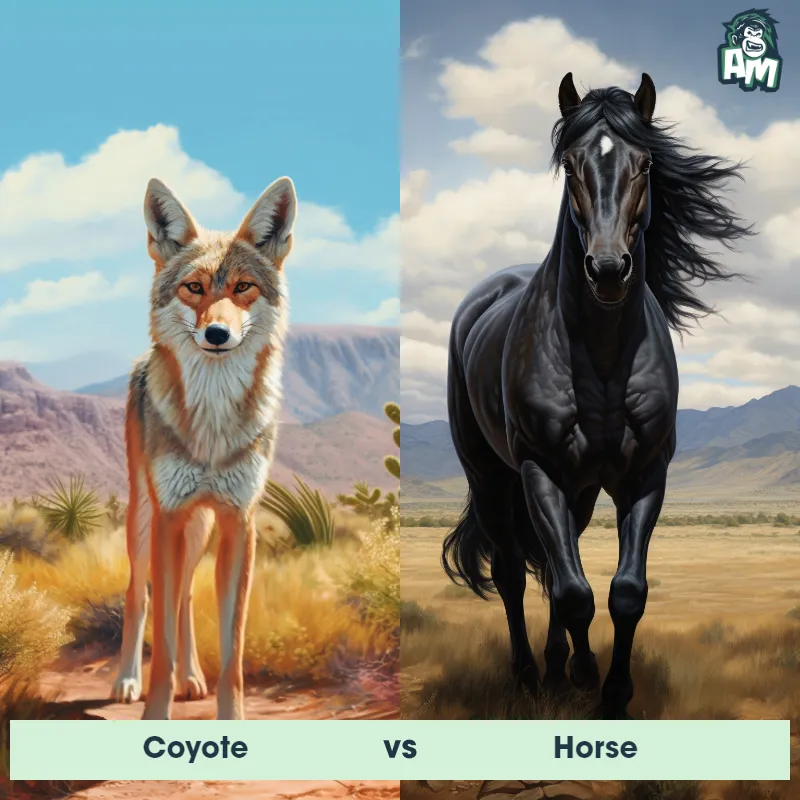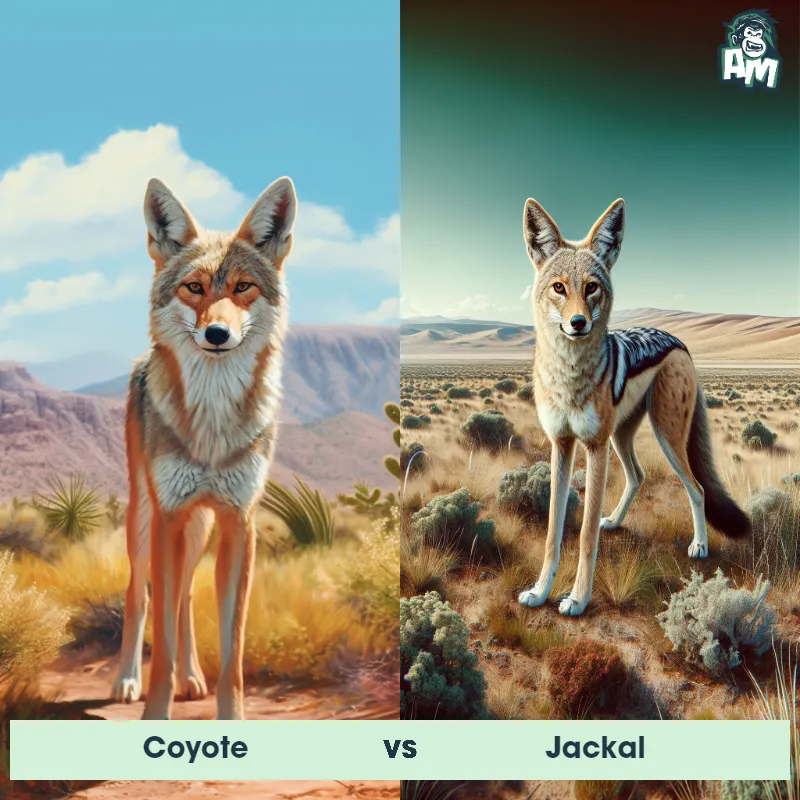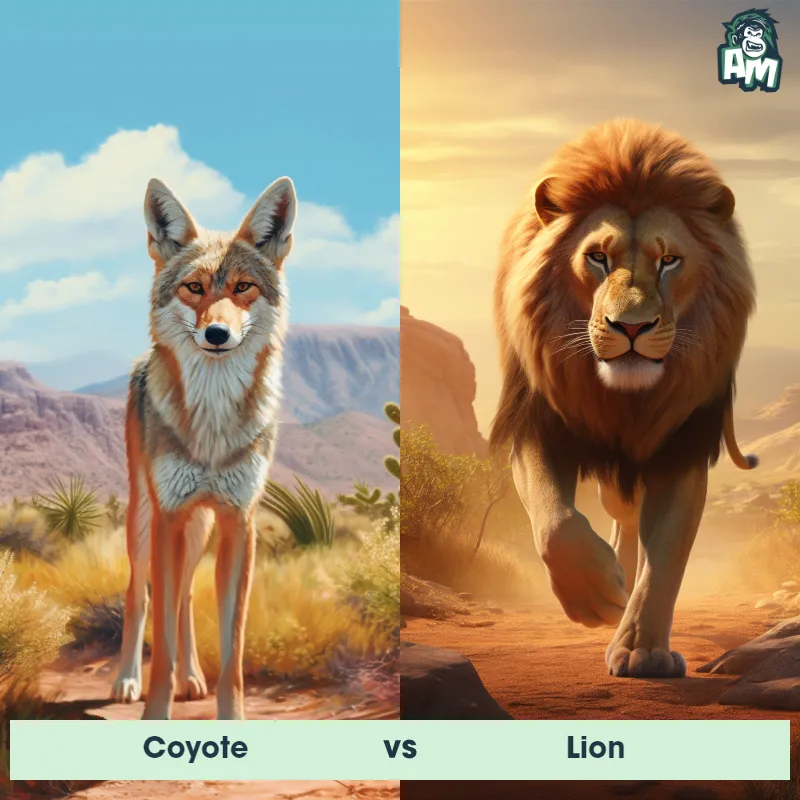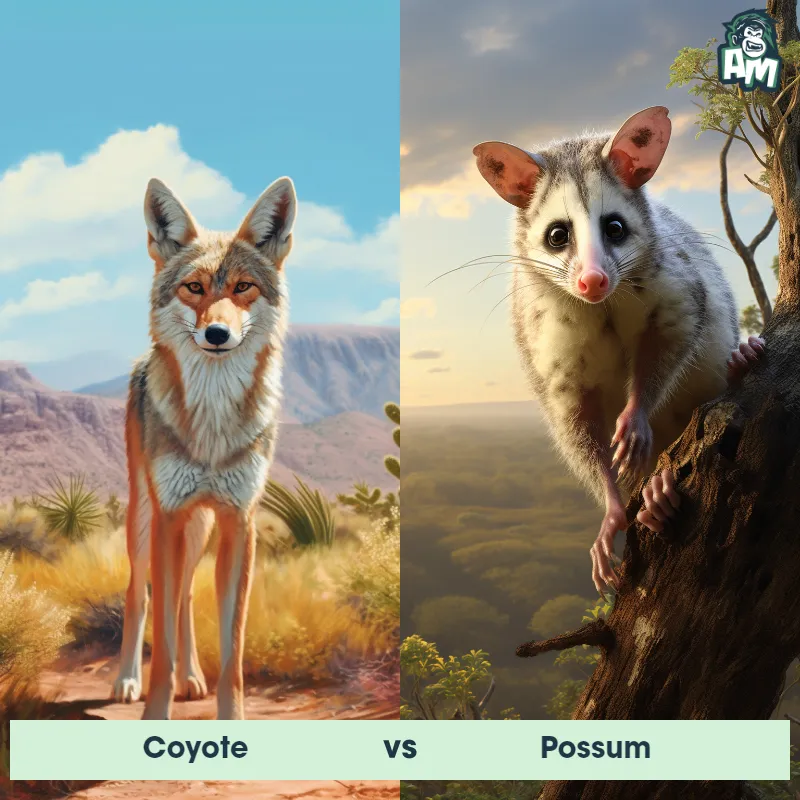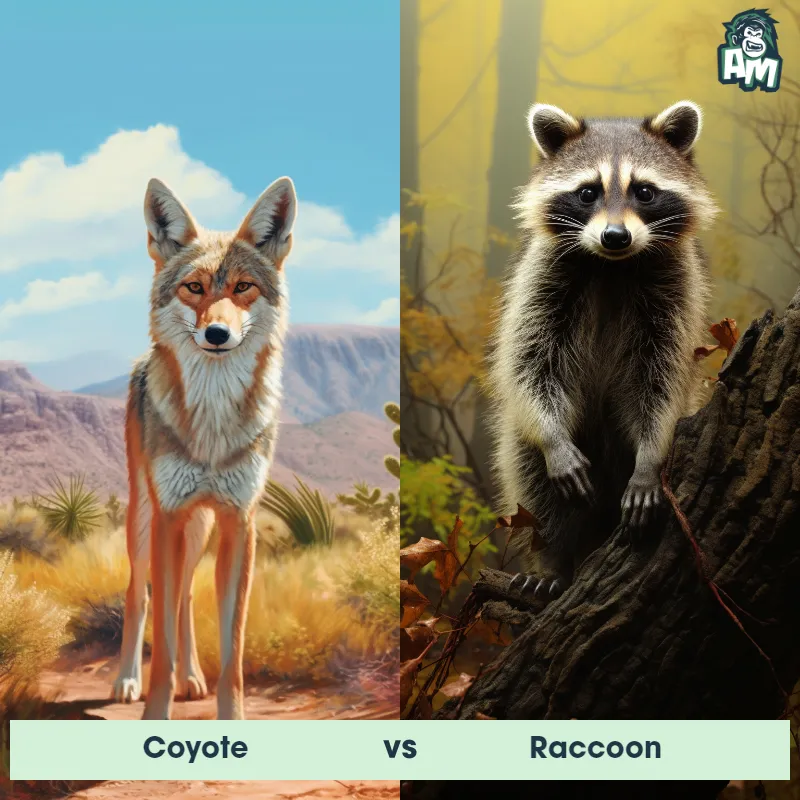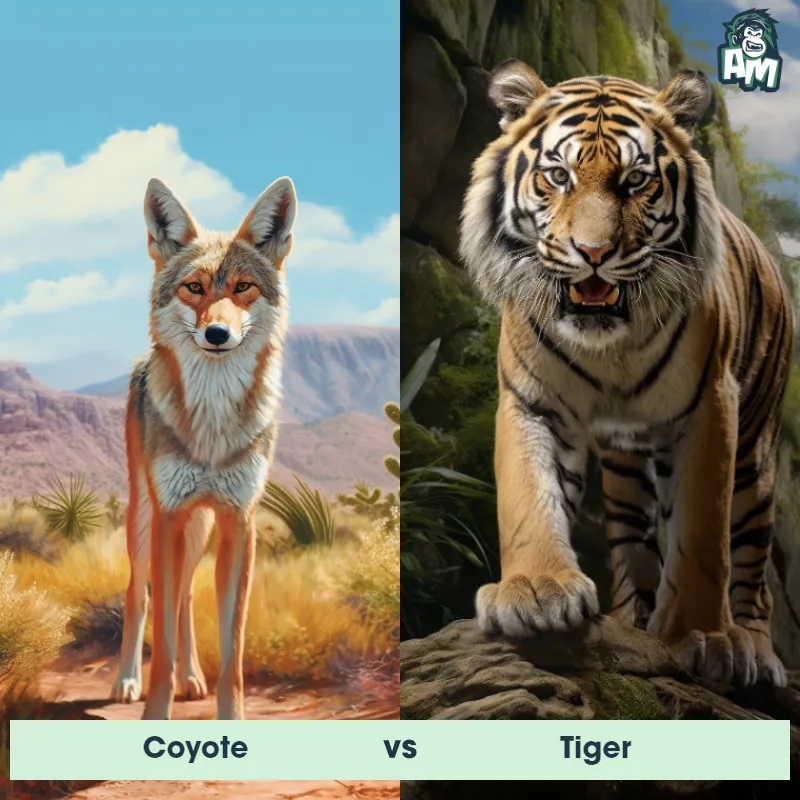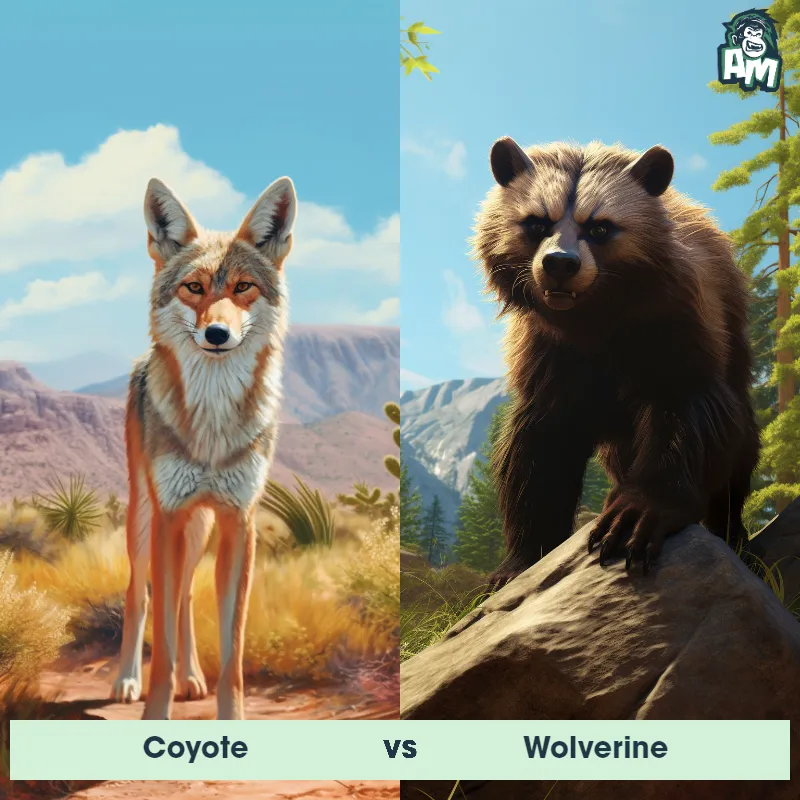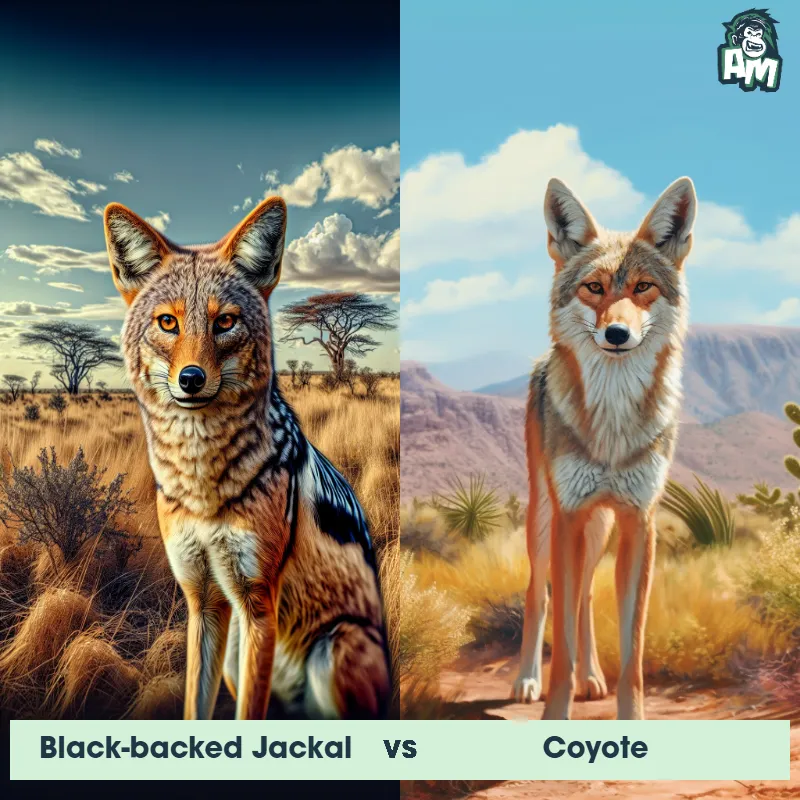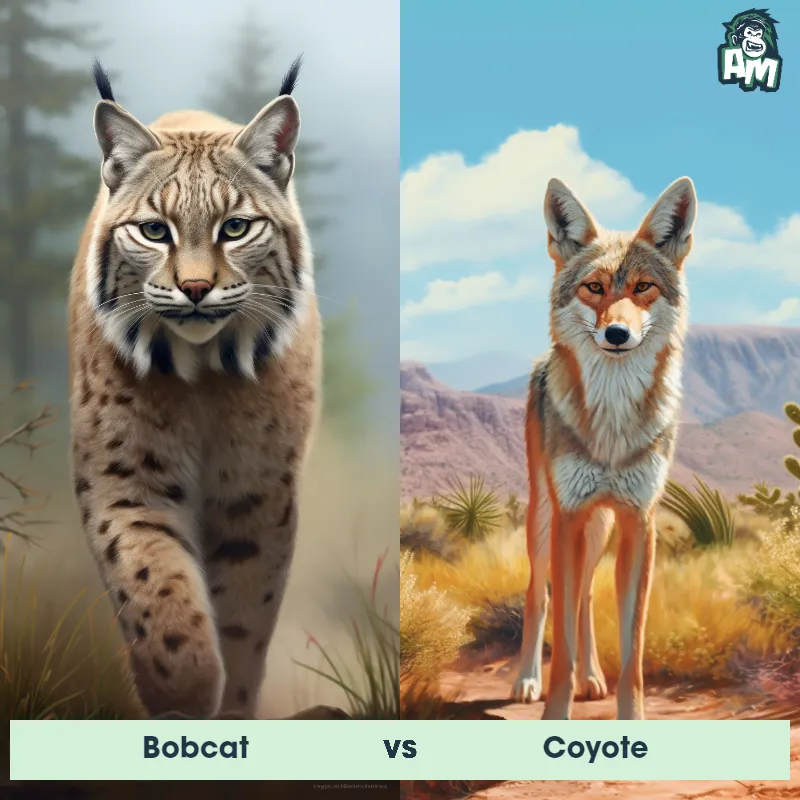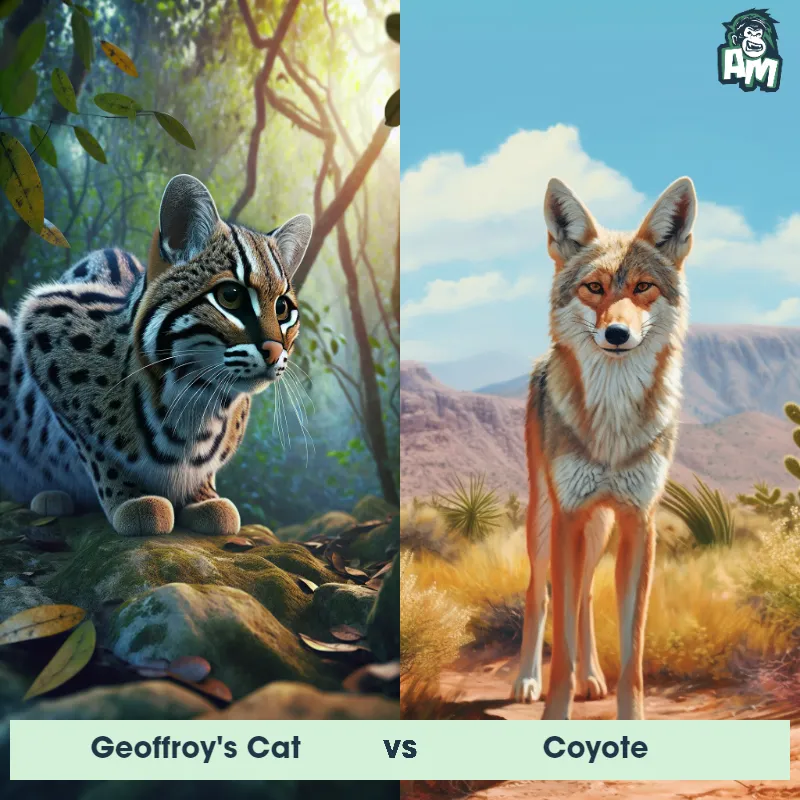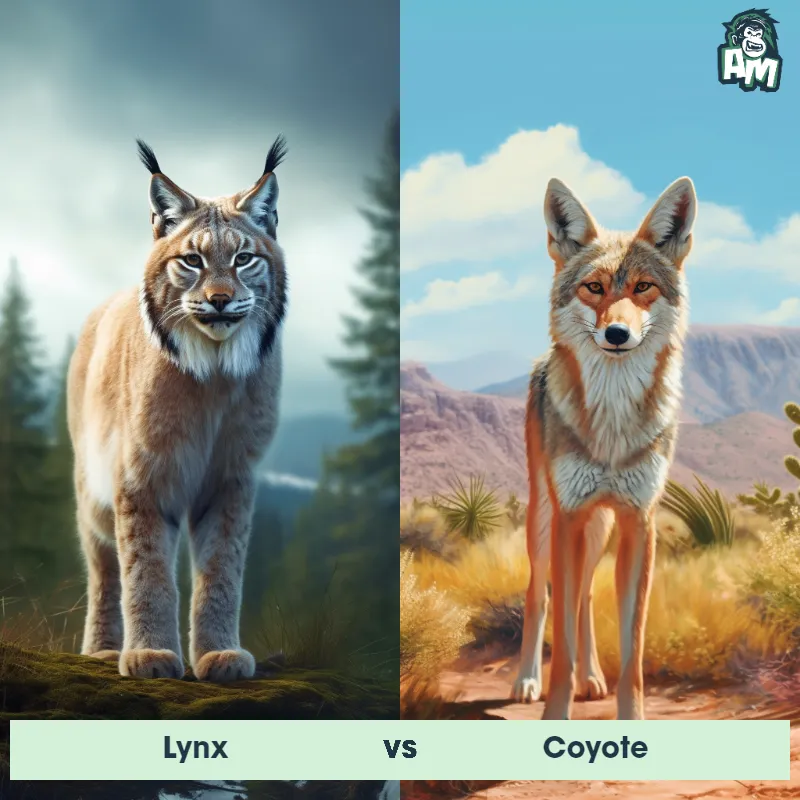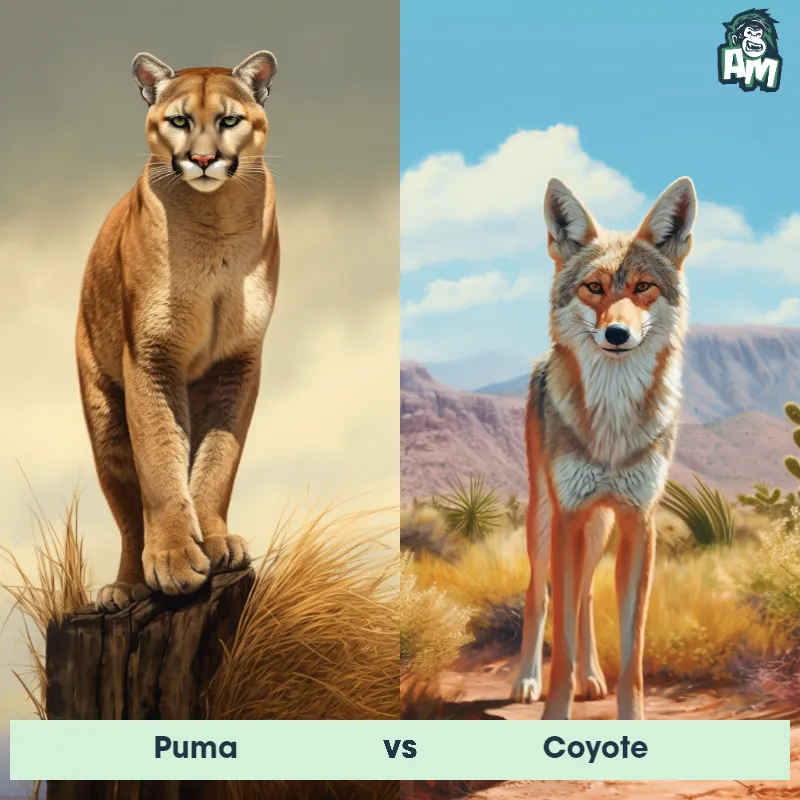The Coyote
The coyote, also known as Canis latrans, is a medium-sized canid that can be found throughout North and Central America. It has a slender, agile body with a bushy tail and pointed ears. Coyotes typically have a gray or reddish-brown fur, but their coloration can vary depending on their habitat. They are highly adaptable animals, able to thrive in a variety of environments, including forests, deserts, and urban areas. Coyotes are known for their intelligence and cunning behavior, displaying traits such as resourcefulness and opportunism. They are primarily nocturnal and are skilled hunters, feeding on small mammals, birds, insects, and fruits.
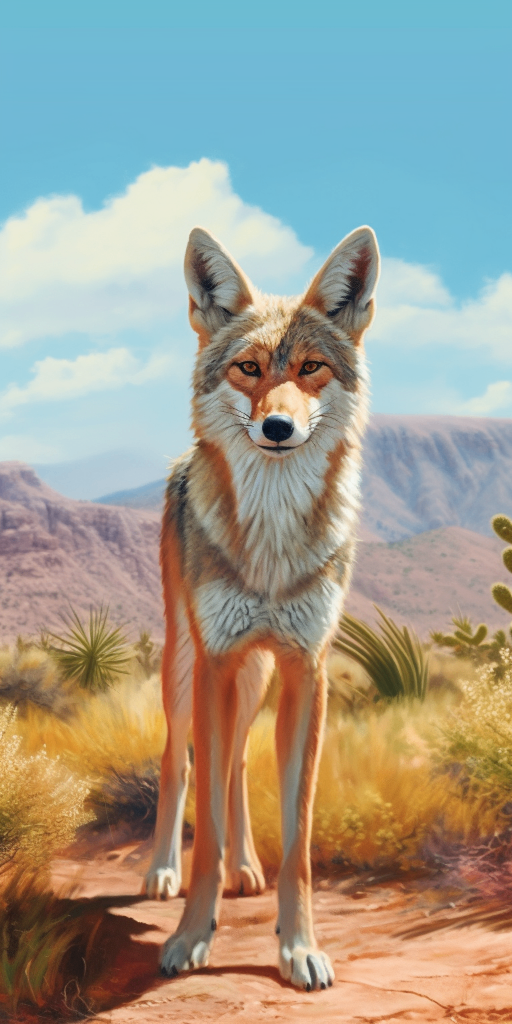
| Coyote | |
|---|---|
| Size | 32-37 inches (81-94 cm) in length |
| Weight | 20-50 pounds (9-23 kg) |
| Speed | Speed: 43 mph (69 km/hr) |
| Key Strength | Speed and agility |
| Biggest Weakness | Lack of physical strength |
| Scientific Name | Canis latrans |
| Family | Canidae |
| Habitat | Various habitats, including deserts, forests, and grasslands |
| Geography | North and Central America |
| Diet | Omnivorous, eats small rodents, insects, fruits, vegetables, and larger prey like deer and livestock |
| Lifespan | 10 years - 14 years |

The Coyote
The coyote, also known as Canis latrans, is a medium-sized canid that can be found throughout North and Central America. It has a slender, agile body with a bushy tail and pointed ears. Coyotes typically have a gray or reddish-brown fur, but their coloration can vary depending on their habitat. They are highly adaptable animals, able to thrive in a variety of environments, including forests, deserts, and urban areas. Coyotes are known for their intelligence and cunning behavior, displaying traits such as resourcefulness and opportunism. They are primarily nocturnal and are skilled hunters, feeding on small mammals, birds, insects, and fruits.
Fun Fact: Coyotes are excellent swimmers and have been observed swimming across rivers and lakes to reach new territories or hunt for food.
| Coyote | |
|---|---|
| Size | 32-37 inches (81-94 cm) in length |
| Weight | 20-50 pounds (9-23 kg) |
| Speed | Speed: 43 mph (69 km/hr) |
| Key Strength | Speed and agility |
| Biggest Weakness | Lack of physical strength |
| Scientific Name | Canis latrans |
| Family | Canidae |
| Habitat | Various habitats, including deserts, forests, and grasslands |
| Geography | North and Central America |
| Diet | Omnivorous, eats small rodents, insects, fruits, vegetables, and larger prey like deer and livestock |
| Lifespan | 10 years - 14 years |
Match Highlights
Coyote Matchups
We use AI to simulate matchups between the Coyote and other animals. Our simulation considers size, strength, and natural predatory behaviors to determine the most likely outcome.
Coyote: Diet, Predators, Aggression, and Defensive Behaviors
What do Coyotes eat?
Coyotes are primarily carnivorous animals, known to have a diverse diet. They commonly hunt small mammals such as rabbits, rodents, and birds. However, they are opportunistic feeders and will also consume fruits, insects, and even carrion when necessary. In urban areas, Coyotes may rely more on scavenging for food from garbage or pet food left outside.
Do Coyotes have any predators?
Although Coyotes are skilled predators themselves, they do have natural predators in certain regions. Larger predators such as wolves, cougars, and bears have been known to prey on Coyotes. Additionally, humans also pose a threat to Coyotes through hunting and trapping.
Are Coyotes aggressive?
Coyotes are generally shy and elusive animals, preferring to avoid confrontations with humans. However, they can exhibit aggressive behavior if they feel threatened or are defending their territory. In urban areas, Coyotes may become more brazen due to habituation to human presence.
Do Coyotes fight?
Coyotes are not known to engage in frequent physical fights with other animals unless it is for mating or territorial disputes. When conflicts arise, Coyotes will often display aggressive behaviors such as growling, baring teeth, and posturing to deter their opponents.
How do Coyotes defend themselves?
Coyotes have a few defensive mechanisms to protect themselves from threats. They may flee when confronted by a larger predator or show dominance through vocalizations and body language. In extreme cases, Coyotes may resort to physical confrontation by using their sharp teeth and claws to defend themselves.
What is the biggest weakness of Coyotes in a fight?
Despite their agility and cunning nature, Coyotes have limitations in physical combat, especially when faced with larger predators or groups of animals. Their relatively small size and solitary behavior can make them vulnerable in confrontations where sheer strength or numbers are decisive factors. Additionally, injuries sustained in a fight can be detrimental to a Coyote's survival in the wild.
Fun Fact: Despite being primarily solitary animals, coyotes are known to engage in cooperative hunting behaviors, where they form small packs to better take down larger prey, such as deer.
Fun Fact: Coyotes have the ability to adapt their diet to the available resources, and their menu can include a wide range of items, from carrion and small prey to fruits, berries, and even human leftovers.




